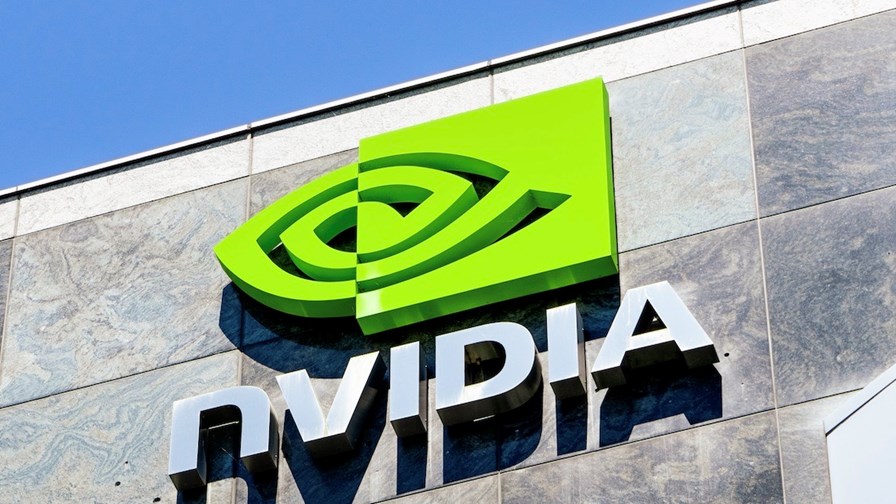
- Nvidia has published its fiscal third-quarter results
- Revenues are up by 206% year on year (that is not a typo)
- Its quarterly operating profit topped $10bn (also not a typo)
- Analyst believes its rivals are still way behind
Nvidia cemented its position as the leading developer and provider of the technology that enables generative AI (GenAI) applications late on Tuesday when it reported staggering fiscal third-quarter financials that included a 206% year-on-year increase in revenues to $18.12bn: Put another way, its sales tripled from the $5.93bn reported in the same quarter a year ago.
The company’s processors, in particular its graphics processing units (GPUs), and its software, in particular its GPU-optimised Cuda stack, are used to train and run the large language models (LLMs) that underpin the cloud-based generative AI (GenAI) applications that are being deployed globally by companies and individuals for an increasing range of tasks.
The demand for its technology has skyrocketed during the past year, as its numbers show. In addition to the giant leap in sales, its operating profit for the three-month quarter that ended on 29 October was $10.4bn, up by (wait for it) 1,633% year on year from the $601m reported a year earlier.
Even the sequential growth numbers are phenomenally high, with fiscal Q3 revenues 34% higher than in Q2, while the sequential growth in operating profit was 53%. These numbers are incredible but, of course, that level of growth cannot be sustained. We can already see this from the company’s fiscal fourth-quarter revenues forecast of $20bn, which will still be a massive rise year on year but result in sequential growth of just over 10% – albeit still amazing but lower than the Q2-to-Q3 growth rate.
The big question is whether Nvidia can maintain or even increase these revenue numbers and hang on to its abnormally high profit margins.
Much of this will depend on the level of processing capacity needed by the cloud services giants and the end user demand from enterprises. Currently, Nvidia’s main growth is coming from the sale of the chips it has developed for datacentres, the home of GenAI processing. All of the major datacentre operators are buying as much Nvidia product as they can and that demand resulted in datacentre product revenues of $14.5bn, up by 279% year on year and by 41% sequentially.
“Our strong growth reflects the broad industry platform transition from general purpose to accelerated computing and generative AI,” stated Nvidia founder and CEO Jensen Huang. “Large language model startups, consumer internet companies and global cloud service providers were the first movers, and the next waves are starting to build. Nations and regional CSPs [cloud service providers] are investing in AI clouds to serve local demand, enterprise software companies are adding AI copilots and assistants to their platforms, and enterprises are creating custom AI to automate the world’s largest industries. Nvidia GPUs, CPUs, networking, AI foundry services and Nvidia AI Enterprise software are all growth engines in full throttle. The era of generative AI is taking off,” he added (with a large smile, surely!).
That next wave could also see the use of Nvidia’s technology in telecom networks: Japan’s SoftBank is already flirting with the company’s “accelerated compute” hardware for server architectures that can simultaneously support AI and software-defined 5G functionality – see Nvidia smells blood in the RAN and Nvidia and SoftBank team on GenAI, 5G/6G platform.
And Nvidia has time to ride that wave before its rivals catch up, according to experienced tech sector investment analyst Richard Windsor. In his latest Radio Free Mobile blog, he noted that “Nvidia is the engine of the generative AI craze and the phones are ringing off the hook with customers all wanting to purchase its chips.” However, he added that the vendor’s near-term growth potential might be held back by a lack of production capacity at its main chip fabrication plant partner, Taiwan Semiconductor Manufacturing Company (TSMC). Nvidia “will need to increase its bookings at TSMC in 2024 if it wants to continue growing and I am far from certain that TSMC has the space at these nodes to accommodate the demand,” he wrote.
That potential hurdle notwithstanding, Nvidia is “in an extremely strong position. Despite a growing list of competitors, Nvidia remains the place to train one’s generative AI algorithms, largely as a result of the CUDA platform that Nvidia has spent almost 20 years building. Everyone knows how to use it and likes it, combined with its breadth of tools… nothing can hold a candle to it yet,” according to Windsor.
He noted that Nvidia’s main competitive threat comes from OpenAI, which is establishing an ecosystem that could provide an alternative way of training LLMs. But as the past few days have shown, the OpenAI team isn’t very focused on its core tasks just now and the turmoil at the Microsoft-backed company is “working in Nvidia’s favour,” concluded Windsor.
So while Windsor is very impressed with Nvidia’s progress and position, he believes the company’s current market valuation of $1.23tn only makes sense if the current rate of growth can be maintained and if the GenAI bubble doesn’t burst… and he has grave doubts about that – to find out why, check out his blog.
- Ray Le Maistre, Editorial Director, TelecomTV
Email Newsletters
Sign up to receive TelecomTV's top news and videos, plus exclusive subscriber-only content direct to your inbox.




